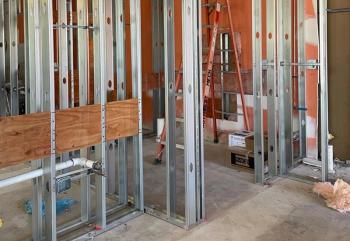
7 tips from the trenches
The entrants in the Veterinary Economics Hospital Design Competition represent the best practices built every year. Check out these lessons learned from their designs.
As a judge for the Veterinary Economics Hospital Design Competition, I learn which design elements work particularly well, see new trends in practice, and get a picture of design features that are here to stay. I hope these insights from the competition will help you create the right design for your practice, whether you're building or sprucing up your existing facility:
1.Retain an architect who's familiar with veterinary design. It's almost always obvious when a veterinary architect worked on a project—even if he or she simply acted as an advisor or worked with a local architect or building firm. Veterinary architects understand your needs when it comes to traffic flow, materials, and organization.
2. Traffic flow is critical. Think carefully about how clients enter, exit, and move from room to room. Then think about how your staff members move through the hospital as they work. Ideally, you won't experience any congestion, and staff members won't need to make detours to retrieve animals, gather products, or visit various work areas.
3. Invest in high-quality, durable materials. For example, look for flooring, wall materials, and fixtures that will endure heavy traffic flow. And while concrete-block runs or vinyl flooring may be less expensive, they'll take more labor to maintain than some of the newer, more visually appealing materials on the market.
4. Be creative, but be careful. For example, color is great; use it—but get advice from a professional designer when you're making color choices and coordinating your decor. If your approach is too unusual, you run the risk of developing a look that's so "you" that it no longer appeals to your diverse audience of clients and potential clients.
5. Spend time and money to include technology. The competition judges look for extras that increase efficiency and improve client education and communication. One example: flat-screen monitors in exam rooms that display digital images.
6. Be open. Besides looking attractive and helping keep the facility full of light, interior windows make it easy to check on patients. And it's easier to locate staff members rather than using an intercom, paging them, or going searching.
7. Signage is vital, inside and out. Clients should be able to find your practice easily if they're driving by. It's also important that the design of your signs instructs entering clients where to go inside the practice for an exam, boarding, or to buy products.
Roger Cummings, CVPM, is a Veterinary Economics Editorial Advisory Board member and consultant with Brakke Consulting Inc. in Dallas. Send questions to
Newsletter
From exam room tips to practice management insights, get trusted veterinary news delivered straight to your inbox—subscribe to dvm360.






